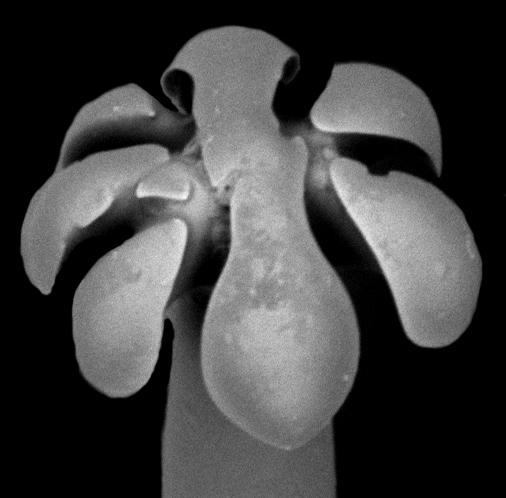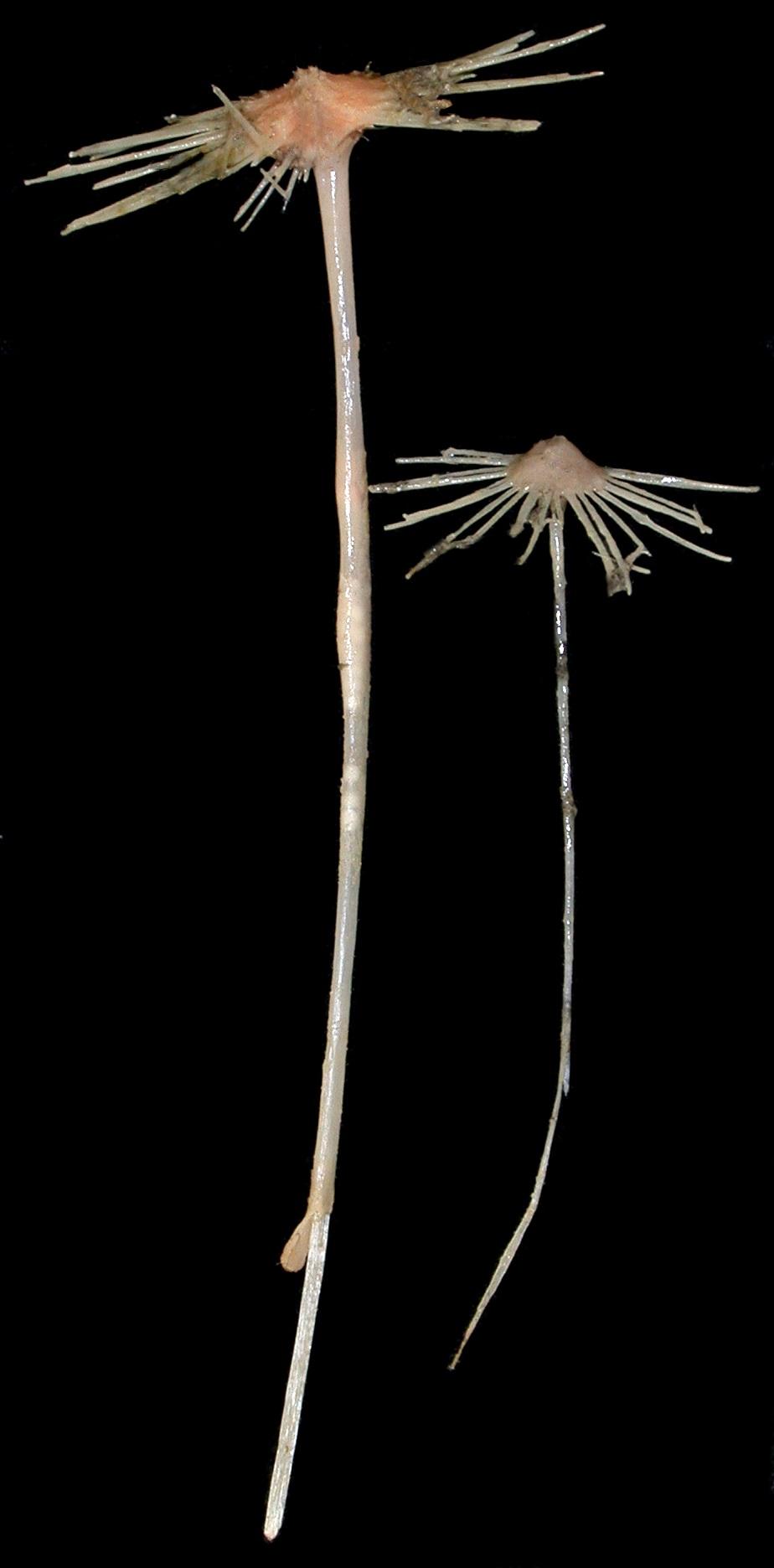May 31 - June 6, 2020: Issue 452
Largest Haul of New Species of Carnivorous Sponges Found off Australia's East Coast

CC callistemnon section 2 isopods. Credit: Queensland Museum
Marine scientists from Queensland Museum and University of Munich have discovered the world’s largest number of new species of carnivorous sponges from a single deep-sea expedition off the East Coast of Australia.
Previously, only three species of carnivorous sponges were known in Australia – now there are 20, after more than two years of work to formally describe 17 new species found during the CSIRO RV Investigator Voyage in 2017 where the team discovered the sponges that live at depths of up to 4000 metres below the surface of the sea.
Queensland Museum Sessile Marine Invertebrates Collection Manager Dr Merrick Ekins said the very rare carnivorous sponge discovery was exciting.
"Traditionally sponges are filter feeders (sucking out passing plankton or nutrients in the water), yet these species, which are found at the bottom of the ocean, have evolved as predators that catch and digest their prey directly," Dr Ekins said.
"Many of these sponges were found at depths between 2000 and 4000 metres down on the ocean floor, and as soon as we found them we knew just how rare they were.
"I would say it is the biggest haul of carnivorous sponges from any one expedition in the world."
Dr Ekins worked with Queensland Museum Honorary Associate Dr John Hooper and Dr Dirk Erpenbeck from Ludwig Maximilian University of Munich to describe the new species found along the eastern Australian coast extending from northern Queensland to Tasmania.
Dr Ekins said one of the best parts of the study was coming up with the names for the new species.
"I had a lot of fun naming them, I used traditional scientific descriptions in Latin or Greek for some; one after a shark because it had these amazing fang like spicules (small needle-like or sharp-pointed structures that make up the skeleton of a sponge), which are used to ensnare hairy crustaceans, another had funky spicules that look like something out of an Escher drawing, so I named it after Escher," Dr Ekins said.
Queensland Museum CEO Dr Jim Thompson said this was a significant discovery for Queensland Museum and showed just how much there is still left to discover and understand about the inhabitants of our deep oceans.
"We know more about the surface of Mars than we know about our deep oceans, so it’s important for scientists to continue to explore the abysses below," Dr Thompson said.
"The ability of Queensland Museum scientists to be part of voyages such as the RV Investigator allows us to find out more about the biodiversity in our deep seas and how they have evolved and adapted to this harsh environment."
The new paper was published recently in the international journal Zootaxa: Merrick Ekins, Dirk Erpenbeck & John N.A. Hooper (2020). Carnivorous sponges from the Australian Bathyal and Abyssal zones collected during the RV Investigator 2017 Expedition. Zootaxa 4774 (1): 001–159. https://doi.org/10.11646/zootaxa.4774.1.1
This research was supported by a grant of sea time on RV Investigator from the CSIRO Marine National Facility.

G337401-SEM-39- Credit: Queensland Museum
What are marine sponges?
Marine sponges (Phylum Porifera) are suspension feeders, filtering seawater for organic particles and metabolising many toxic chemical compounds from the seawater excreted by other animals, plants and microbes. Hence their reputation as the most toxic animals on the planet, and thus primary targets of the pharmaceutical industry.
A few decades ago when carnivorous sponges (now known as Family Cladorhizidae) were discovered in deep-seas, that do not filter feed seawater, nor have the cellular structures to be able to do so, but have instead evolved as predators that catch and digest their prey directly (such as wayward small crustaceans).

CLADORHIZA AUSTRALIENSIS TYPE SPECIMENS. Credit: Queensland Museum